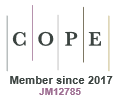Trends in endometriosis interventions: an interrupted time series analysis following the Australian National Action Plan for Endometriosis (NAPE) 2018
Chiemeka C. Chinaka A , Brenda Gannon A * and Jenny Doust B C
A , Brenda Gannon A * and Jenny Doust B C
A
B
C
Abstract
This study aimed to highlight trends in the utilisation of selected endometriosis treatments before and after the launch of the National Action Plan for Endometriosis and observe the impact of the action plan on the utilisation of these interventions.
Monthly Medicare and Pharmaceutical Benefits Scheme claims were used to represent the utilisation of laparoscopic resection and nafarelin for endometriosis. Time series analysis using autoregressive integrated moving average models was used to establish the trend in the utilisation of these treatments. An interruption was then applied at the launch of the plan, and a counterfactual prediction was modelled based on the claims made before the interruption. Factual values and counterfactual predictions were compared to evaluate the impact of the plan.
The action plan was associated with an immediate increase of 3.94 Medicare Benefits Schedule claims per month (95% CI −44.61 to 52.50) and an estimated change in slope of 1.30 claims per month (95% confidence interval (CI) −3.80 to 6.30) for laparoscopic resection. Nafarelin dispensing after the launch of the action plan had an immediate increase of 68.30 dispensing claims per month (95% CI −4.34 to 141.03), with a slope change of −2.84 claims per month (95% CI −10.975 to 5.293).
The results suggest that although the action plan was linked with a marked immediate spike in the utilisation of nafarelin, it did not make any difference in the long term. However, it may have contributed to a small but steady increase in the utilisation of laparoscopic resection, used in severe cases of the condition.
Keywords: chronic diseases, endometriosis, healthcare utilisation, health policy, interrupted time series, Medicare data, reproductive health.
References
1 Olive DL, Pritts EA. Treatment of endometriosis. N Engl J Med 2001; 345(4): 266-75.
| Crossref | Google Scholar | PubMed |
2 Leyland N, Casper R, Laberge P, Singh SS, Allen L, Arendas K, et al. Endometriosis: diagnosis and management. J Endometr 2010; 2(3): 107-34.
| Crossref | Google Scholar |
3 Rowlands IJ, Abbott JA, Montgomery GW, Hockey R, Rogers P, Mishra GD. Prevalence and incidence of endometriosis in Australian women: a data linkage cohort study. BJOG 2021; 128(4): 657-65.
| Crossref | Google Scholar | PubMed |
4 Lebovic DI, Mueller MD, Taylor RN. Immunobiology of endometriosis. Fertil Steril 2001; 75(1): 1-10.
| Crossref | Google Scholar | PubMed |
5 Klein S, D’Hooghe T, Meuleman C, Dirksen C, Dunselman G, Simoens S. What is the societal burden of endometriosis-associated symptoms? A prospective Belgian study. Reprod Biomed Online 2014; 28(1): 116-24.
| Crossref | Google Scholar | PubMed |
6 Armour M, Lawson K, Wood A, Smith CA, Abbott J. The cost of illness and economic burden of endometriosis and chronic pelvic pain in Australia: a national online survey. PLoS One 2019; 14(10): e0223316.
| Crossref | Google Scholar | PubMed |
7 Australian Government Department of Health and Aged Care. National Action Plan for Endometriosis. Report. DHAC; 2018. Available at https://www.health.gov.au/resources/publications/national-action-plan-for-endometriosis?language=en [acessed 1 October 2024].
8 Royal Australian and New Zealand College of Obstetricians and Gynaecologists. Australian clinical practice guideline for the diagnosis and management of endometriosis. Melbourne: RANZCOG; 2021. Available at https://www.acn.edu.au/wp-content/uploads/australian-endometriosis-guideline.pdf [acessed 19 May 2024].
9 Bräuner EV, Busch AS, Eckert-Lind C, Koch T, Hickey M, Juul A. Trends in the incidence of central precocious puberty and normal variant puberty among children in Denmark, 1998 to 2017. JAMA Netw Open 2020; 3(10): e2015665.
| Crossref | Google Scholar | PubMed |
11 Bernal JL, Cummins S, Gasparrini A. Interrupted time series regression for the evaluation of public health interventions: a tutorial. Acad Pediatr 2017; 46(1): 348-55.
| Crossref | Google Scholar | PubMed |
12 Penfold RB, Zhang F. Use of interrupted time series analysis in evaluating health care quality improvements. Acad Pediatr 2013; 13(6): S38-44.
| Crossref | Google Scholar | PubMed |
13 Newbold P. ARIMA model building and the time series analysis approach to forecasting. J Forecast 1983; 2(1): 23-35.
| Crossref | Google Scholar |
15 Hyndman RJ, Khandakar Y. Automatic time series forecasting: the forecast package for R. J Stat Softw 2008; 27: 1-22.
| Crossref | Google Scholar |
16 Schaffer AL, Dobbins TA, Pearson S-A. Interrupted time series analysis using autoregressive integrated moving average (ARIMA) models: a guide for evaluating large-scale health interventions. BMC Med Res Methodol 2021; 21: 58.
| Crossref | Google Scholar | PubMed |
17 Drug Utilisation Sub Committee - Pharmaceutical Benefits Advisory Committee. GnRH Agonists: Utilisation analysis PBAC. 2019. Available at https://m.pbs.gov.au/industry/listing/participants/public-release-docs/2019-06/gnrh-agonists-dusc-prd-2019-06.DOCX [accessed 25 August 2024].
18 Evans S, Villegas V, Dowding C, Druitt M, O’Hara R, Mikocka‐Walus A. Treatment use and satisfaction in Australian women with endometriosis: a mixed‐methods study. Intern Med J 2022; 52(12): 2096-106.
| Crossref | Google Scholar | PubMed |
19 Australia Institute of Health and Welfare. Treatment & management of endometriosis. AIHW; 2025. Available at https://www.aihw.gov.au/reports/chronic-disease/endometriosis/contents/treatment-management-endometriosis [accessed 30 May 2025].
20 Fowler S, Zahir SF, Manning W, Kearney A, Sturgess D. Effect of the covid‐19 pandemic first wave and public policy on elective and emergency surgery provision in southern Queensland. ANZ J Surg 2021; 91(3): 249-54.
| Crossref | Google Scholar | PubMed |
21 Australian Institute of Health Welfare. Endometriosis in Australia 2023. 2023. Available at https://www.aihw.gov.au/reports/chronic-disease/endometriosis-in-australia-2023/contents/treatment-management/hospitalisations [accessed 16 May 2025].
22 Beard E, Marsden J, Brown J, Tombor I, Stapleton J, Michie S, et al. Understanding and using time series analyses in addiction research. Addiction 2019; 114(10): 1866-84.
| Crossref | Google Scholar | PubMed |
24 Pereira da Veiga C, Pereira da Veiga CR, Girotto FM, Marconatto DAB, Su Z. Implementation of the ARIMA model for prediction of economic variables: evidence from the health sector in Brazil. Humanit Soc Sci Commun 2024; 11(1): 11.
| Crossref | Google Scholar |


